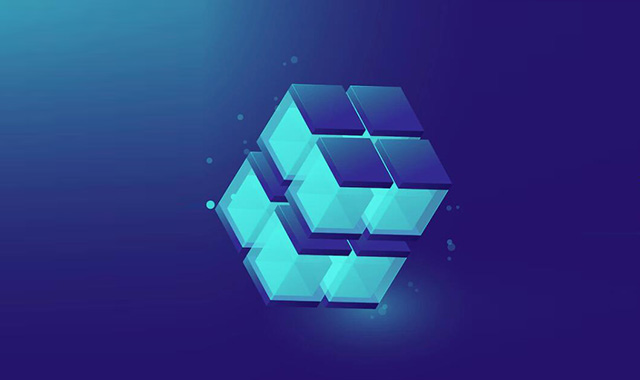-
Where is Blockchain Data Stored? Different storage methods in the blockchain
 linkweb3
linkweb3 2022-12-30
2022-12-30 4323
4323 Tech
Tech
-
Summary:Where is Blockchain Data Stored? Blockchain data on the ledger is stored in blocks called blocks, and these blocks are linked together using encrypted technology.
If you deal with cryptocurrencies, then you must have come into contact with the blockchain at some point. The blockchain is also related to supply chain management, logistics, identity verification and a series of other areas, so even if you don't like cryptocurrencies, you may have used this technology. But where is the blockchain data stored? Blockchain data is stored on decentralized public ledger. The data on the ledger is stored in blocks called blocks, and these blocks are linked together using encrypted technology. In this article, you will discuss the relevant issues of the blockchain data storage.
How does the blockchain work?
Blockchain is a decentralized, distributed, public digital ledger. In 2008, Satoshi Nakamoto first described it as a supplement to the existing equivalent network of all cryptocurrency trading foundations.
The data is open to all nodes of the network, and the participants called miners are verified by consensus.
It has the functions of encrypted transactions, timestamps, and work certification.
Using the blockchain, there is no central institution or institution to control data or ensure its security, as banks do with traditional databases.
This means that the data on the blockchain can only be accessed by those who have obtained permits. For example, developers using real bitcoin addresses or private keys in their own cryptocurrency wallets prove their users.
What is the blockchain storage?
Blockchain storage is a way to save data in a decentralized network. It uses hard disk space that global users are not used to store files. Differential infrastructure is an alternative to centralized cloud storage, which can solve many problems existing in centralized systems.
Why do we need blockchain to store data?
Cloud storage is a traditional data storage method. The biggest disadvantage of cloud storage is that all data is concentrated, and it is usually not encrypted during transaction. Data is the most critical entity. Storage, processing and analyzing data is an important task. Therefore, decentralized storage is needed. The following are some reasons why the data storage requires the blockchain:
Decentralization: The decentralization characteristics of the blockchain ensure that there are no single central entities to manage data -related decisions.
Security: Disposive cloud data is difficult to attack, because there are multiple nodes in the network with the same data copy, and any hacker must change most of the data on the network to make changes look legal.
Distributed: Blockchain is a distributed ledger, which is independent computer records, sharing and synchronous transactions, rather than set the data in one position.
How to use the blockchain for data storage?
There are two different ways to store data in the blockchain:
Storage on the chain: This is an expensive method that stores data in the blockchain, because the data is stored in each block on the chain. If an attack occurs, the data can be restored and used.
Chain storage: In this type of storage, only metadata is stored in the chain. The entire chain is not stored, so if any attack occurs, the data may not be restored. This is an economical and efficient data storage method.
How does the blockchain store information?
Before we understand the details of the blockchain data storage, it is important to understand what blockchain is and how it stores information.
Blockchain is a distributed ledger for online transactions. The information about each transaction is recorded in a database distributed in multiple computers in the network. Data can only be added to the blockchain or read from it.

The blockchain is decentralized and does not require a third party to verify the authenticity of each transaction. Some advantages are conducive to the decentralized nature of the blockchain. all these are:
No need to manage databases without central agencies
Multiple copies of the database of multi -stage computer
Verify the data set in each network node to ensure that the information is not tampered with
All records are immutable, which means that they cannot be revoked or deleted.
These functions allow independent management of the blockchain while ensuring that the information in the database is both effective and safe. Some disadvantages of the blockchain include:
In the case of synchronization and verification algorithm, the speed of accessing data is slow.
Data on a single node are not consistent.
They depend on the large network required to solve the password problem to access information. When the combination is combined, these computer networks will consume more electricity to maintain.
Due to the nature of the blockchain database, they are a good way to store assets and related transaction information.
Where is the blockchain data stored?
Blockchain data is stored on decentralized public classification accounts. The data on the classification account is stored in blocks called blocks, and these blocks use cryptographic links together.
Each block has a unique encrypted hash as the identifier and the previous block in the blockchain.
Each transaction in the block has a timestamp and adds to the classification account with each block. Each new block records all transactions and adds them to the previous block. The data stored on the blockchain cannot be changed or deleted from the blockchain because it needs to be changed on each subsequent block.
Miners who find solutions for job certification problems (for example, by submitting the correct answer to solve the Formula) will receive the newly created Bitcoin reward, and the block must be added to the blockchain. However, it takes time to do so, so the miners use the ability of computer processors to solve these problems, leading to the first solution to these problems.
Block -key unit of blockchain
Each transaction in the blockchain is stored in a record group called a block. A information block is full of transaction records. Once a block is completed, it will link to the previous block to form a chain.
This is where the name "blockchain" starts to make sense. Each block is encrypted by hash code, making the data from simple violent attacks.
The result is the blockchain that is permanently linking through the timestamp. The chain forms a safe record timeline that can be used to check the transaction receipt of anyone who visits the blockchain.
Where is the blockchain stored?
The blockchain stores on a computer called a node. The data itself is stored on the user's hard disk. It can also be stored on the virtual server on the cloud computing network. The use of cloud storage to the blockchain adds a layer of security and increases the benefits of remote access.
There are two basic types of blockchain nodes.
Type 1: Full node
These nodes include transaction information in the entire blockchain network. The whole node is essential to search for records in the entire blockchain. Think of these as the main server in the network. The whole node is also necessary for the update of the existing network.
In terms of storage, a full node contains all blocks in the blockchain. Therefore, they will occupy a large amount of storage space, especially when the blockchain is older and stores multiple transaction records.
There is another variant in the entire node in the modern blockchain network, called pruning node. Pruning nodes saves disk space by storing the nearest block. The data required to rebuild the previous blocks are still stored in other locations. We introduced more information about trimming nodes below.
Type 2: Light node
The light node only stores the block of the recent transaction information. If the user needs to verify the old transaction, the light node must request information from the entire node.
There are several benefits of light nodes. The first benefit is speed. You can quickly retrieve and verify information from the nearest position.
You can guess that the second benefit is that the storage space is reduced.
Since the light node is not stored in the blockchain, the storage requirements are reduced. However, light nodes maintain the label records of each block in the blockchain to verify the order of previous blocks.
There are different storage methods in the blockchain to store data:
Hash: This is an economical and efficient way to store data in the blockchain. In this method, only the data of the data is stored in the blockchain. The original data can be stored in the file system, and the hash ID of the blockchain will be attached to the original data.
Tiesdb: This is a decentralized application (DAPPS) based on Ethereum, which is used to store non -financial data and search for its documents. This allows advanced search and document modification.
BigChaindb: This database allows developers and enterprises to use blockchain database to deploy blockchain concept verification, platforms and applications. This provides unchanged data storage, built -in asset support, low latency, strong query functions and high throughput, so this is a database with blockchain.
Distributed database: You can use distributed databases such as MongoDB, Apache, Rethink DB to store data. They are fast and widely used, but they are not verified by Byzantine. This means that any hacker can destroy the entire information library because all information centers completely trust each other.
Disposable cloud storage: Disposable cloud storage allows storage storage data. Among them, the data is not stored on the company's server, but is stored on the tenant's device. This storage can be used online to make them fast and efficient, but they are also expensive.
Star File System: This is a blockchain technology that can decompose data into fragments and store them in multiple instances. This is a point -to -point solution, and only when people need it. Therefore, this is an address -related storage solution.
The type of blockchain and its stored data
Bitcoin was the first cryptocurrency to use blockchain technology. This is the first generation of technology, and there are many places that need to be improved.
Obviously, there are other blockchain solutions and the first blockchain platform to solve most Bitcoin blockchain technology problems, such as Ethereum. It was developed by Vitalik Buterin.
Compared with Bitcoin, the data storage method in Ethereum is different. They use Tire data structures to ensure better data accessability, scalability and availability.
It also separate temporary data from the trading data of excavation. When managing permanent and temporary data, the data structure is also very effective. Only when the transaction is confirmed can the data be recorded in the trading tree.
Status tree is used to store temporary data, including account addresses, etc. In some cases, this will also be used to change data.
In short, there are three types of Trie in the Ethereum blockchain:
Status tree.
Store trees.
Affairs tree.
What does the transaction data contain?
The transactions between users are the way Bitcoin moves from one person to another. During the transaction, it is written into the blockchain in a specific format and broadcasts all nodes on the network. The data stored in the transaction consists of multiple different fields:
Sendor Address: The sender address of the transaction.
Receiver address: the address of the recipient of the transaction.
Transaction amount: The amount of the transfer, including the decimal position. This is very important because there are a few dollars in Bitcoin. Therefore, if you send a Bitcoin and two beauty points, it is equivalent to one Bitcoin and two beauty in Bitcoin.
Time stamp: This is a message telling you which block of the transaction and its timestamp. Because the blockchain is public, anyone can see all the transactions above; therefore, this information can be used to view the time or the time of the time for the payment within a specific time period.
Different types of blockchain storage data
Blockchain technology can store data in a variety of ways. All this depends on the blockchain, but some examples include:
Bitcoin: In Bitcoin, the data includes the complete history of all Bitcoin transactions. If a node is wrong, it will use thousands of other nodes as a reference point to correct itself.
Ethereum: Ethereum use Trie data structure to store data. It separates temporary data from the trading data of mining. Only when the transaction is confirmed can the data be added to the trading tree. There are three types of Trie in Ethereum for data storage:
State Terry: This global state Terry is constantly updated, which contains the key value pairs of each account existing on the Ethereum network.
Storage Trie: This storage contract data. Each Ethereum account has a storage tree, and 256 hash values of 256 -bit hash at the roots of the storage tree are stored in a global state tree.
Trading tree: Each Ethereum block has its own independent trading tree. A block contains a lot of transactions
Corda: This is an open source blockchain platform that does not use global broadcasting. It can reduce the preservation cost while simplifying business operations. Here, because the graphics and lasting queues are used, the communication between the peers without downloading the entire data is required.
The current blockchain storage project
SIA, Star File Systems (IPFS), MAIDSAFE and Storj are some well -known companies that provide blockchain storage.
SIA is an open source software company focusing on decentralized cloud storage technology. It provides a platform that can run their own private decentralization cloud in it. It does not accept customer payment.
IPFS is a point -to -point (P2P) super -media distribution system, which aims to provide a permanent, decentralized file storage and sharing method. The nodes in the IPFS network form a distributed file system that can be accessed in various ways, including Linux -based FUSE interfaces and HTTP (hyper -text transmission protocols). Local files can be added to the IPFS network and disclosed to the world.
MAIDSAFE is a company that is the goal of creating a new "backbone network" for access, exchange and storage data for the Internet. The MAIDSAFE network can also be used to build a blockchain decentralized application (DAPPS).
STORJ aims to provide private, secure, and efficient P2P -based cloud storage based on the Ethereum blockchain platform. The StorJ platform uses shards and end -to -end encryption (E2EE) to store and protect data.
SIA, STORJ, and IPFS have launched their own cryptocurrencies (Siacoin, Storjcoin X and Filecoin) to try to create a market for decentralized storage and encourage them. The main obstacle to the company's launch blockchain storage project is scalability.
The above content introduces where blockchain data is stored. Blockchain is a revolutionary system for security records, but it still has a major defects -confidentiality. The whole significance of using the blockchain lies in the distributed trust and the ability to verify transactions in an environment without trust. Although this sounds convincing, the reality is that it can only be used to encrypt data with public access rights.
Disclaimer:As an open information publishing platform, shilian only represents the author's personal views and has nothing to do with shilian. If the article, picture, audio or video contains infringement, violation or other inappropriate remarks, please provide relevant materials and send it to: 2785592653@qq.com.
Hint:The information provided on this site does not represent any investment suggestion. Investment is risky, and you must be cautious when entering the market.
ShilianFan group:Provide the latest hot news, airdrop candy, red envelopes and other benefits, WeChat: rtt4322.
















